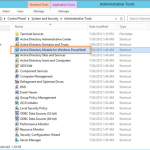When navigating the complex landscape of plans and packages, whether for insurance, subscriptions, or services, understanding the fine print is key. 2026 promises to be a year marked by evolving choices tailored to consumers, making it even more essential to compare plans options effectively. But where do you start? This article explores top tips to empower you when comparing plans like a pro.
Why Comparing Plans Matters
With a rapidly expanding range of services and products, choosing the right one requires more than intuition. Comparing plans wisely ensures you receive value for your money, avoid hidden costs, and gain features that align with your priorities. Whether you’re picking a health insurance plan or deciding on a subscription service, the ability to evaluate your options critically can lead to significant savings and satisfaction.
Top Tips for Effective Plan Comparisons
1. Define Your Goals and Priorities
Before comparing plans, outline your needs and goals. Ask yourself these questions:
- What features are non-negotiable for me?
- Is pricing or quality more important in this case?
- How will this plan align with my long-term goals?
By understanding what matters most, you can filter out options that don’t fit your criteria and save time during the review process.
2. Break Down Costs
Cost can often be misleading if only the headline figure is considered. To assess the true value:
- Look at upfront, recurring, and hidden costs.
- Compare the cost of different tiers or packages.
- Calculate the long-term total, especially if the plan’s duration extends beyond a year.
Understanding the cost structure helps avoid surprise fees and ensures you don’t overspend.
3. Evaluate Features Side by Side
The best way to compare plans is by creating a side-by-side table of their features. This allows you to:
- See which plans offer exclusive features.
- Identify gaps in coverage or customization.
- Assess if the extra features justify a higher price point.
Pay close attention to essential features and ensure the plan delivers what you need without unnecessary add-ons that inflate costs.
4. Research User Reviews and Feedback
Customer reviews can provide valuable insight into how a plan performs in real-world scenarios. Look for:
- Detailed feedback on reliability and performance.
- Comments about support and responsiveness to issues.
- Trends or patterns in complaints or praises.
While not every review reflects the truth, consistent praise or criticism may signal essential strengths or weaknesses.
5. Consider Scalability and Flexibility
Plans that look great now might not work well as your needs evolve. For long-term satisfaction:
- Check if the plan can scale with your changing needs.
- Ensure flexibility in upgrading or downgrading.
- Look for providers who offer options to adapt as new trends emerge.
Plans that are future-proof make financial and practical sense, especially in a fast-paced landscape.
6. Analyze Terms and Conditions
It’s tempting to skip the fine print, but this critical step avoids many pitfalls. Focus on:
- Cancellation policies and grace periods.
- Hidden charges or automatic renewals.
- Limitations or exclusions on certain features or coverage.
Being aware of restrictions means fewer surprises down the road.
Stay Ahead of the Curve
With plans becoming more customizable and nuanced in 2026, mastering the art of comparison is critical. Be diligent, informed, and flexible to select the best-fit option. By following the tips above, you’ll maximize value and minimize stress when picking your next plan.










